Knee Strength? You Need It. 6 Yoga Poses to Keep Your Knees Pain-Free.
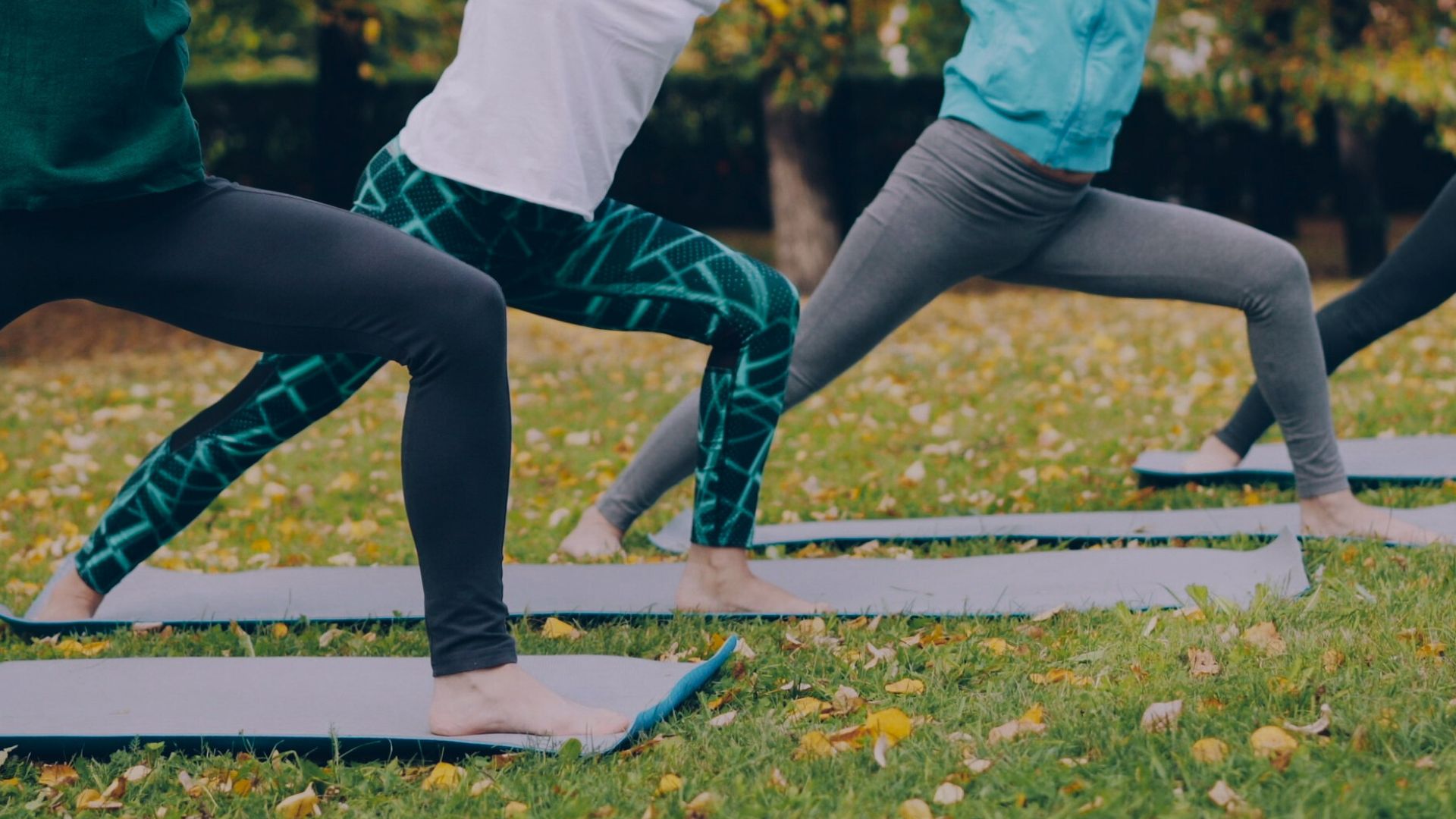
(Photo: Vitaly Gariev | Pexels)
Whether you’re clocking miles on pavement, hiking trails, sitting long hours at a desk, or adjusting to aging, the knees are often the first to experience the aches and pains of everyday life.
As a yoga teacher, I’m constantly reminded by my students how common knee discomfort is. “Runner’s knee” tends to steal the spotlight when it comes to knee pain, but it’s far from the only issue. That’s because the knees don’t exist in isolation. They sit at the crossroads between the hips and ankles, bearing weight, absorbing impact, and depending entirely on the surrounding muscles for stability. When there’s tightness, weakness, or imbalance anywhere along that chain, the knees end up feeling the discomfort.
Strengthening the knees, then, isn’t just about the knees. It’s about supporting the entire body. This is where yoga for knees can provide a long-term approach to strengthen surrounding muscles and help your body move at its best.
Why Knee Strength Matters
The knees are simple in design but have a big job. They stabilize us when we stand still, propel us when we move, and absorb shock with every step.
Any type of repetitive forward motion, such as running, creates tight quads and hip flexors, a risk factor for knee injuries. Long hours sitting at a desk cause the glutes and hip muscles to weaken over time, which also adds pressure to the knees. And as we age, cartilage thins and muscle tone decreases, reducing resilience in the knee joints.
Yogic philosophy calls these types of imbalances pratibandha, a blockage in the natural flow of prana (energy) which manifests as stiffness or misalignment.
Balanced strength across the quads, hamstrings, and hips is key to protecting the knees. The classic Sanskrit text The Hatha Yoga Pradipika describes this as: Sthira sukham asanam, which translates to, “Every posture should cultivate steadiness and ease.” In other words, when practiced with awareness, yoga can help strengthen the knees and help restore balance in the entire body.
Here’s how.
Yoga for Knees: 6 Essential Poses for Knee Strengthening
Yoga reminds us that the body is not a collection of parts but a connected whole. You can support how your knees, surrounding muscles, and entire body work together by practicing these knee-strengthening yoga poses.
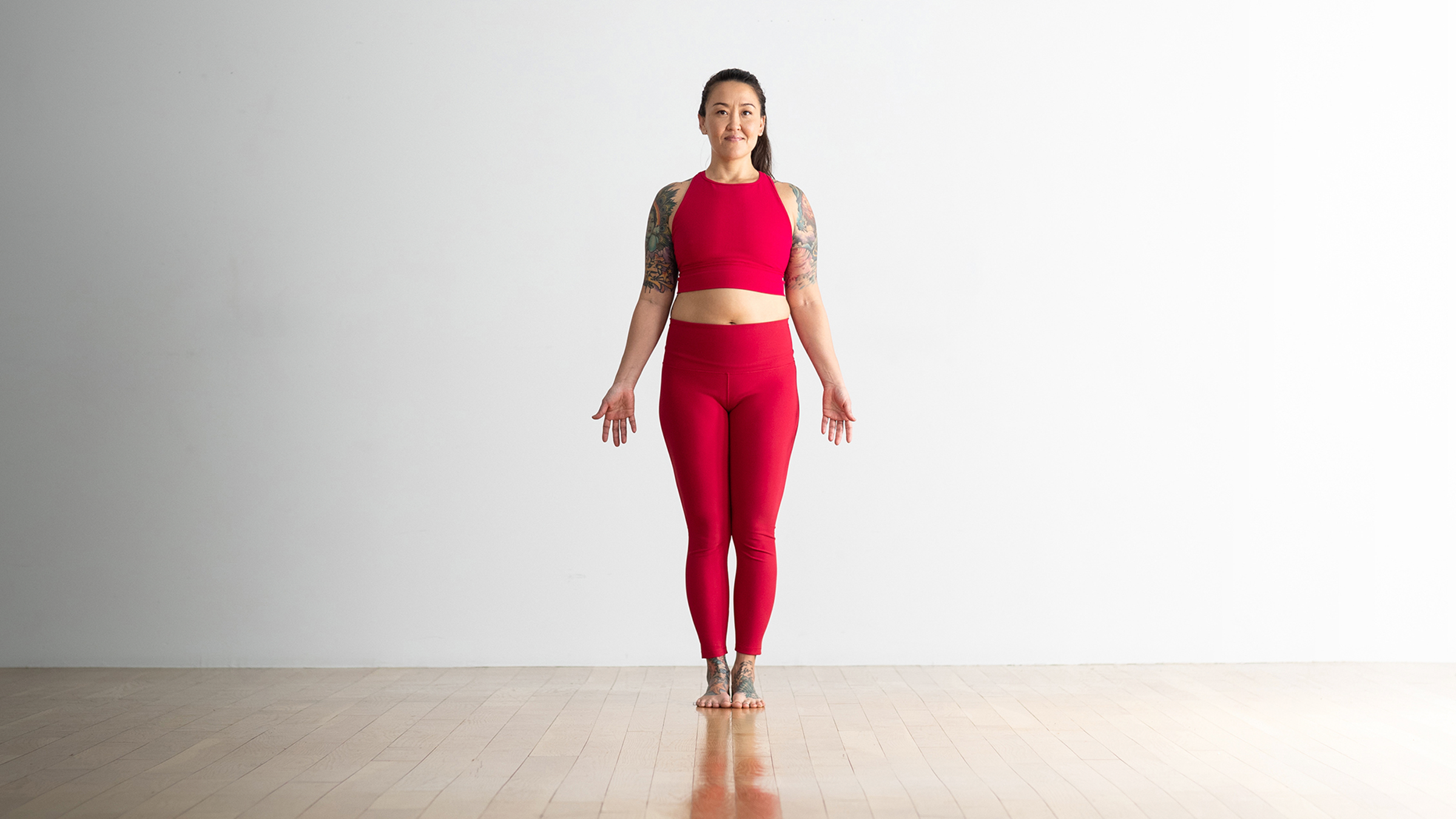
1. Mountain Pose (Tadasana)
Many people overlook the benefits of this simple standing posture, which is essentially the blueprint for all standing postures by teaching you full lower-body engagement. It activates the quads, calves, and foot muscles. Keeping a slight bend in your knees teaches you to distribute weight evenly between your feet and prevents over-straightening (hyperextension).
How to:
- Stand with your feet together.
- Relax your shoulders away from your ears, draw your navel toward your spine, and press your feet into the mat. Rest your arms at your sides with your palms facing forward. Gaze straight ahead in Mountain Pose.
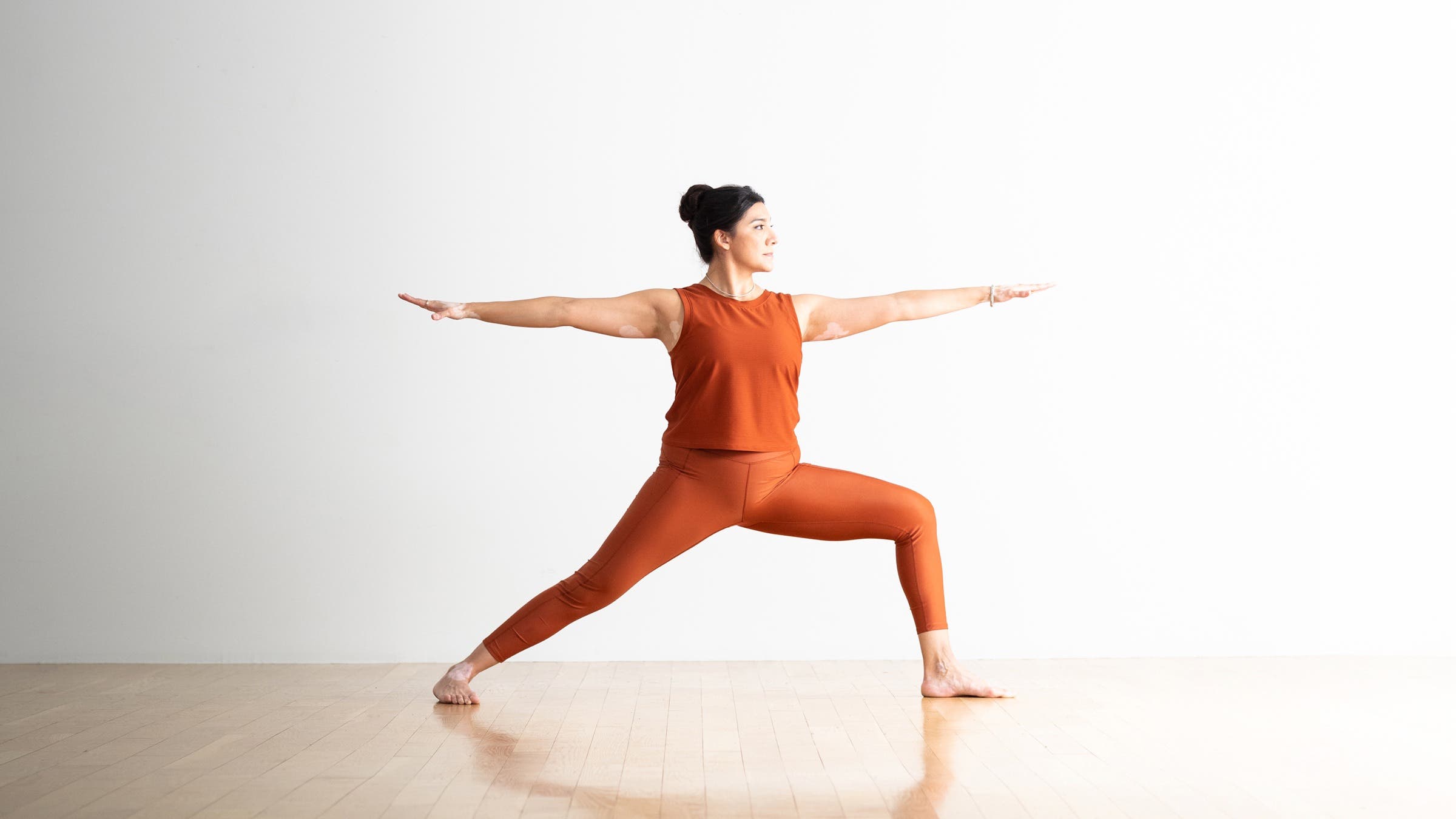
2. Warrior 2 (Virabhadrasana II)
When practiced with awareness, Warrior 2 isn’t just a pose—it’s functional training for how we move through life. Tracking your front knee above your ankle, rather than allowing it to collapse inward, builds body awareness, helps strengthen your quads and glutes, and works your outer hips
How to:
- Stand in a wide-legged stance with your arms in a T position.
- Turn your left foot toward the short side of the mat and angle your right foot out slightly. Bend your left knee. Press the outer edge of your right foot into the mat. Stack your shoulders over your hips and reach the crown of your head toward the ceiling. Gaze past your left fingertips in Warrior 2. Breathe here, then switch sides.
Variation: Supine Warrior 2 is a gentler, reclined version of Warrior 2 that allows you to focus on alignment and muscle engagement without bearing weight. Lying on the mat, come into Warrior 2 position with blocks underneath each ankle. This variation helps train your body to keep your knee stable over the ankle.
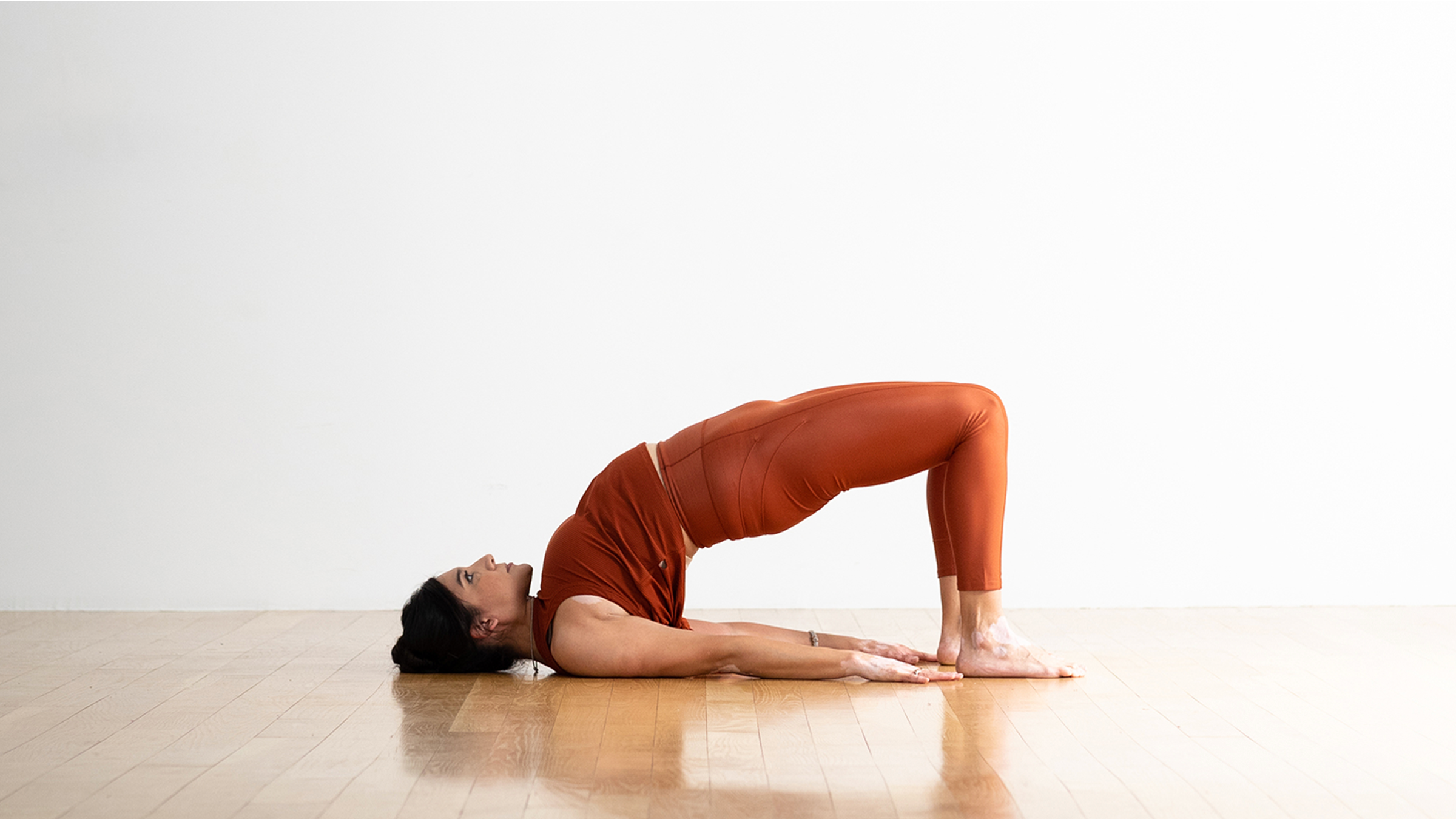
3. Bridge Pose (Setu Bandhasana)
Building strength in the back body can majorly reduce stress in the knees. That’s why Bridge Pose is often a game-changer, especially for runners. It activates the hamstrings and glutes, often-neglected muscles that balance out the dominant quadriceps. Plus, it supports hip stability and lower back health, two crucial allies in knee longevity.
How to:
- Lie on your back with your knees bent and your feet on the mat, hip-distance apart. Rest your arms alongside your body with your palms down.
- Inhale, press your feet into the floor and lift your hips off the mat. Press your arms into the mat or clasp your hands under your back. Draw your shoulders beneath you in Bridge Pose.
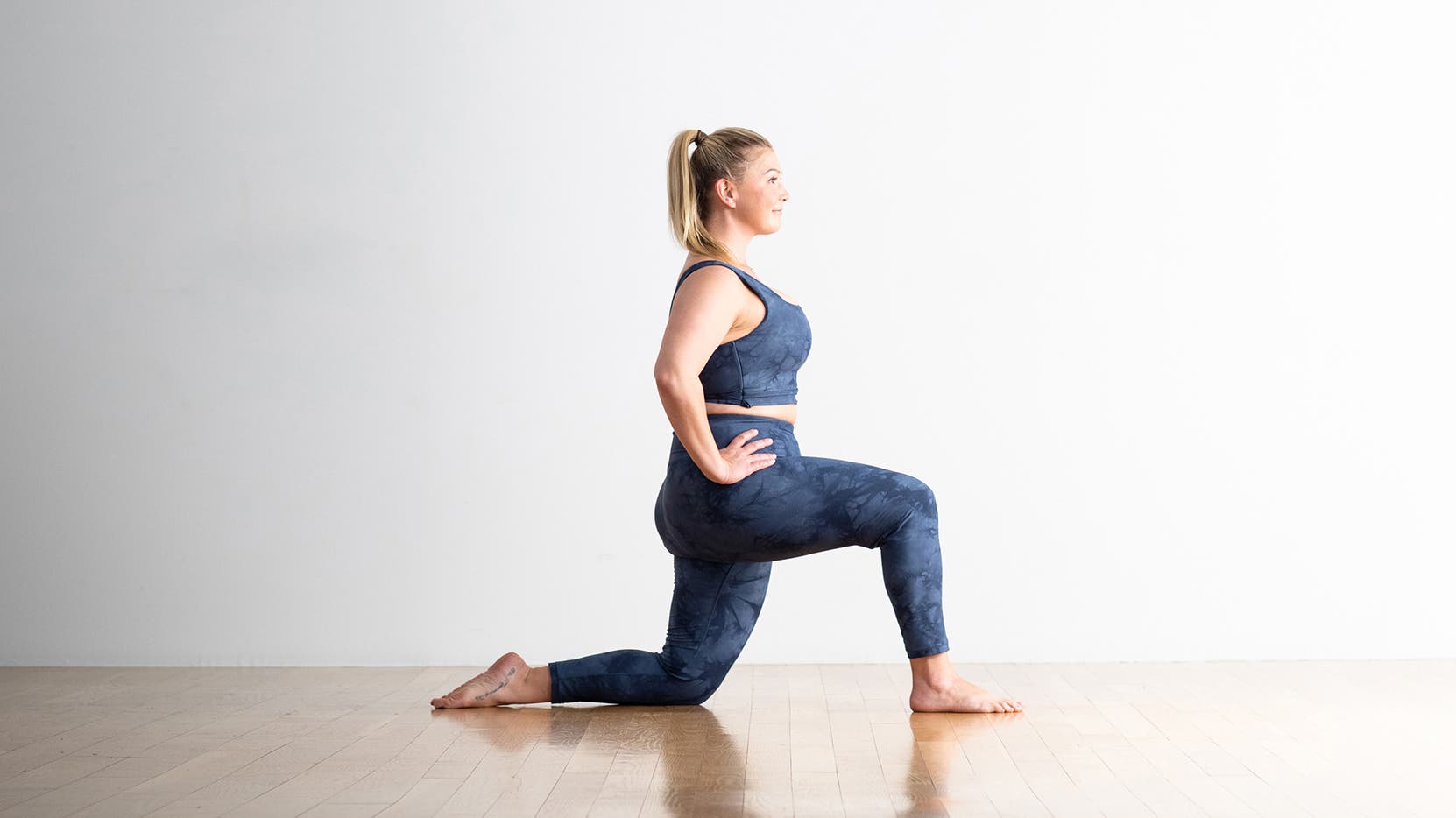
4. Low Lunge (Anjaneyasana)
Knee discomfort often stems from tight hip flexors and quads. Low Lunge helps release these muscles and ease tension through the front of the body. Stretching the hips in Low Lunge helps the knees move more freely and without strain.
How to:
- Come to your hands and knees. Step your right foot forward between your hands. Slide your left knee back until you feel a comfortable stretch in the left front thigh.
- Inhale and sweep your arms out to the sides and overhead, lifting your torso upright. Draw your shoulders away from your ears in Low Lunge. Switch sides.
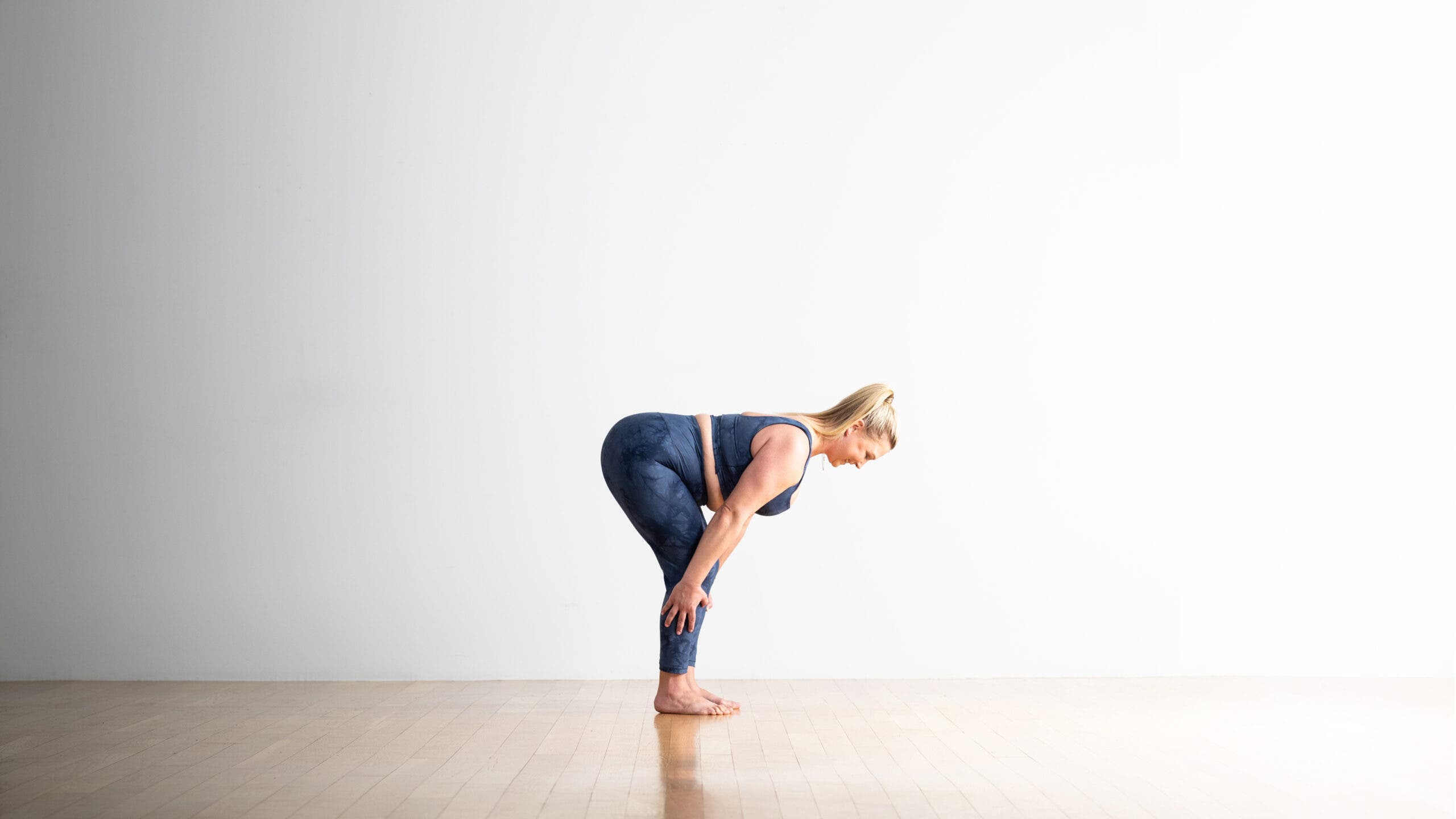
5. Half Forward Fold (Ardha Uttanasana)
A pose that can profoundly relieve tension from the hamstrings and calves, Half Forward Bend is safest for the knees when you keep them slightly bent. Over time, this pose also strengthens the popliteus—a small yet powerful muscle that stabilizes the knee.
How to:
- From Standing Forward Bend, press your palms or fingertips into the mat or blocks beside your feet. Inhale and straighten your elbows, lifting your chest away from your thighs. Bend your knees as much as you need to. Gaze at the floor a few feet ahead of you in Half Standing Forward Bend.
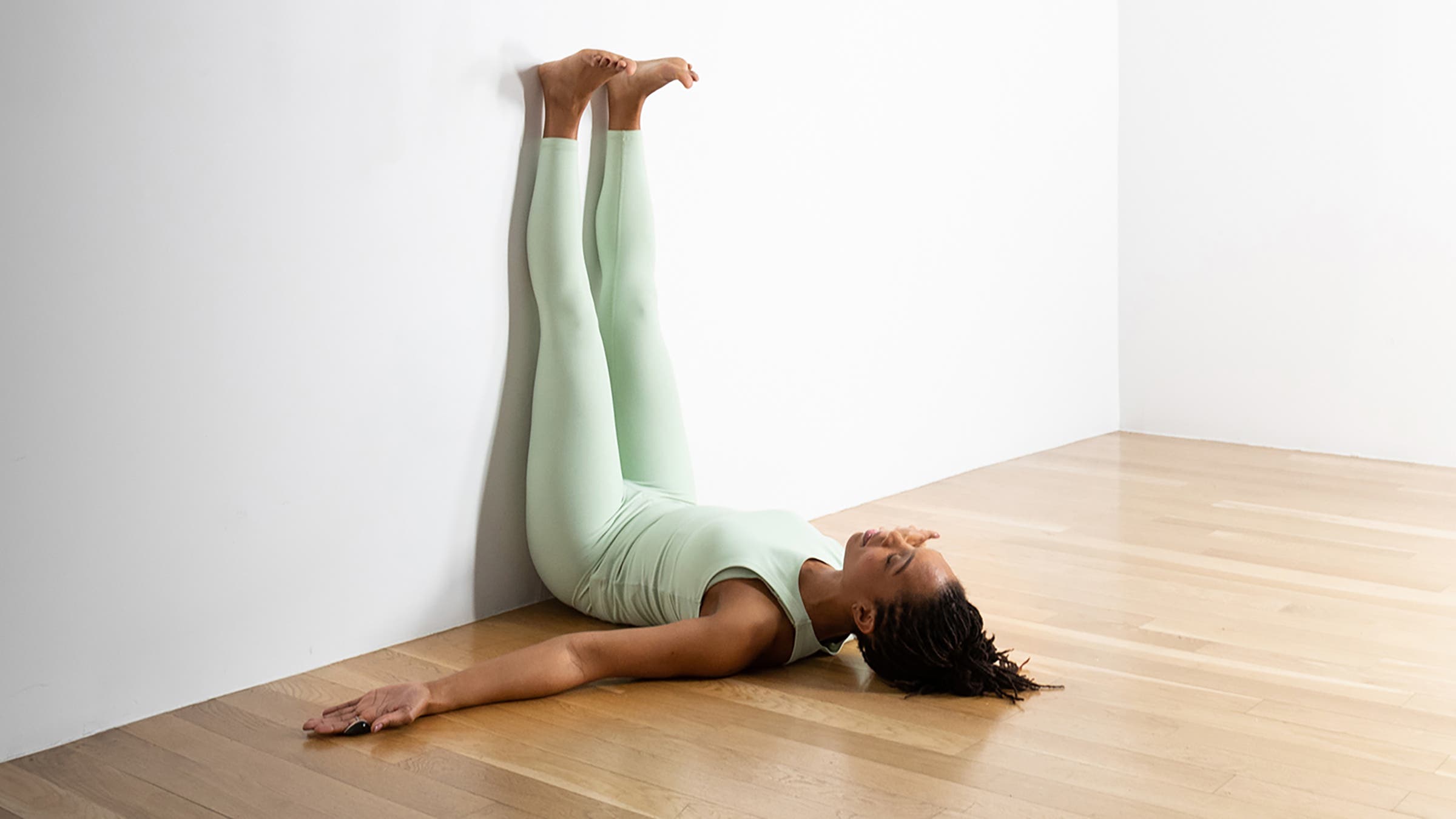
6. Legs-Up-the-Wall Pose (Viparita Karani)
Think of this as your active recovery ritual. Elevating the legs reduces swelling and soothes tired joints after long runs or active days. The focus isn’t strengthening in Legs Up the Wall—it’s about replenishment. Rest, after all, is an essential part of resilience.
How to:
- Sit on the floor with one hip against a wall. Lie on your opposite side, then roll onto your back and swing your legs against the wall. Adjust your position by scooting your tailbone toward the wall. Position your feet about hip-distance apart and let the weight of your legs rest against the wall. Rest your arms at your side with your palms facing up in Legs Up the Wall Pose.